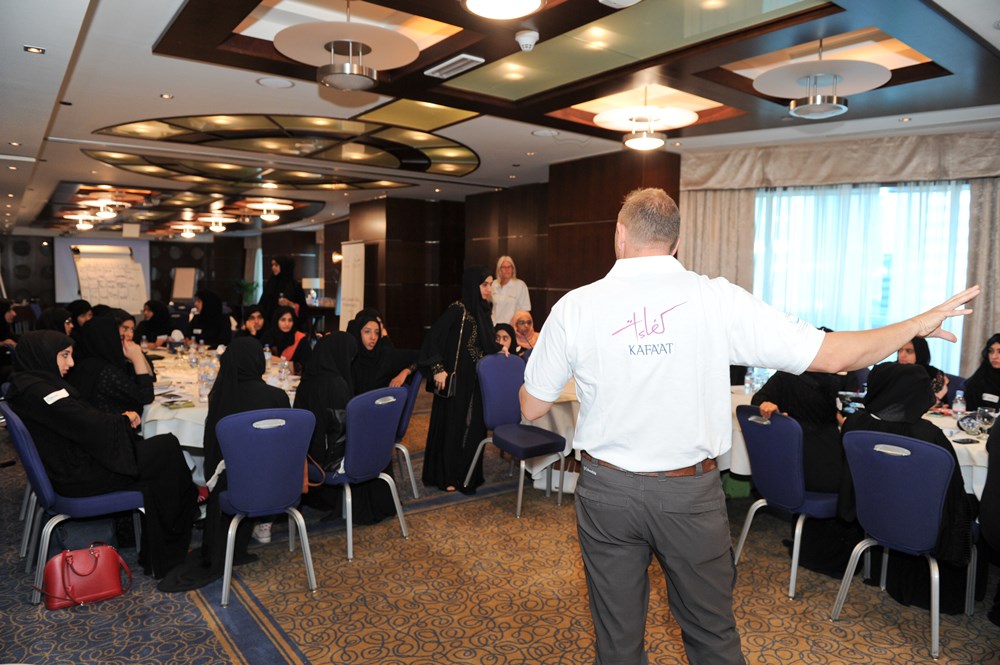Having been with Emirates Foundation from the beginning, I have witnessed both operating and grantmaking models. Initially we supported many civil society organizations with grants to build their capabilities. However, many had to discontinue their activity as they struggled to maintain fundraising. Our new focus on supporting social enterprises seems to offer a better path to sustainability.
The size and diversity of our earlier grants was another factor significantly diluting our impact and ability to create sustainable outcomes. When mapping out our impact, we realized our grants were too scattered and too small. In some cases the impact was not measurable as grantmakers have no control over the quality and impact of third parties – except that they remain dependent on you for funding! There was no financial independence, no plans to secure it, and no sustainability around their impact.
‘Applying business principles to creating social impact has helped us drive down costs, drive up value creation and create economies of scale.’
With our new operating venture philanthropy model, whereby we shifted from short-term grantmaking to long-term, measurable and financially viable social investment, focusing on only one area, youth development, we became better equipped to deliver sustainable, scalable programmes. Applying business principles to creating social impact has helped us drive down costs, drive up value creation and create economies of scale. We are already seeing a difference in terms of measurable outputs: our programmes have had an impact on over 40,000 youth in the UAE.
One of the foundation’s flagship projects, Kafa’at, was developed as a social enterprise. By its third year of operation it had generated revenue from fees paid by companies for a variety of programmes to build the capacity of young people to work in the private sector and was close to breaking even. This showed that becoming self-sustaining through a product or service revenue stream can reduce dependency on grant funding and is much more sustainable, unlike risking discontinuation if grants dry up.
Which brings us to the next question: is it really possible for existing programmes and initiatives, which are grant-funded with no associated commercial product, to become self-sustaining social enterprises? Second, is this business model right for programmes and initiatives that have not been designed to be financially viable and sustainable social enterprises? With a few exceptions, scholarship programmes for example, my answer is yes.
Can they ever be entirely free of grant funding? And can people running these programmes shift their mindset from a fundraising to a sales-led culture? Can they put in place the necessary systems to deal with a social enterprise? This change in mentality can be difficult for many people, and new business acumen skills will need to be brought in or developed internally to implement this new business approach.
At Emirates Foundation, building on the success achieved with Kafa’at, we continue to challenge ourselves with transforming our programmes into social enterprises, even those that weren’t designed from the start to be social enterprises, focusing on developing products or services. We see this as a five to ten year time horizon that demands capacity building, market development, regulatory reform, social enterprise registration and improved cost efficiencies, including the need to move away from centralized support functions as they spin off. Only once you have developed your own income stream, sale and marketing capability, and a product or service that the market wants, are you ready to exit!
Which brings us to a ‘strategic’ question: when is it time to say goodbye? Ideally, the best way to ensure an effective exit strategy is to design it from the outset, at the time of the investment, or at least long before the end of the ‘funding’ relationship. In other words, have proper plans around the product or service, with clear costings and projections of future revenues. This is why our programmes now all have business plans, clear revenue projections and projected ‘spin-off’ targets.
Meeting these targets will undoubtedly be difficult but the mere fact of having them is already a great improvement over traditional philanthropic models. Hence, for those projects that were not initially designed as social enterprises, the question is when can they start putting in place a clear strategy to ‘graduate’ from grant dependency to a more sustainable, financially viable business model? It’s not easy to be pioneers. Only time will prove the success of the model as more foundations transition just like we did at Emirates Foundation.
Khuloud Al Nuwais is chief sustainability officer at Emirates Foundation. Email
kalnuwais@emiratesfoundation.ae







Comments (0)